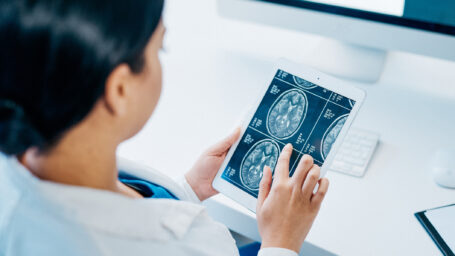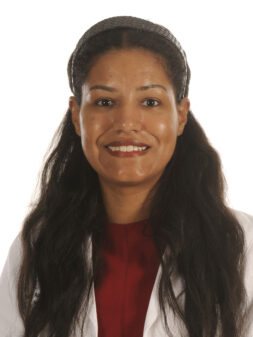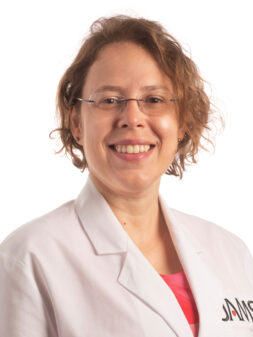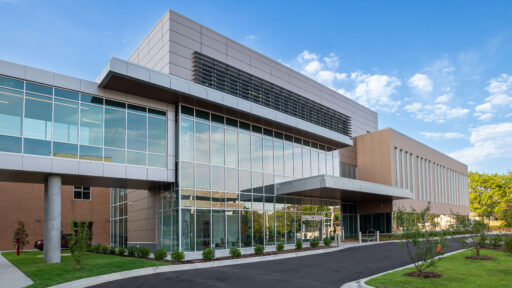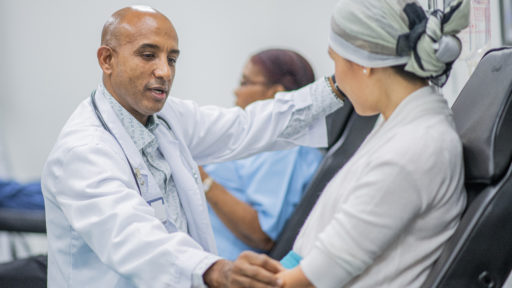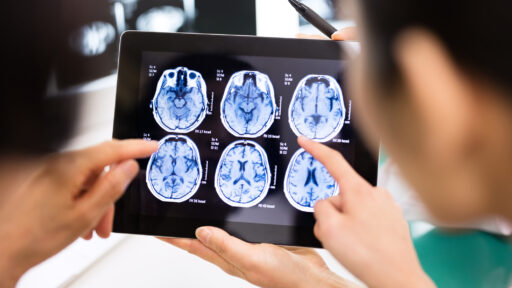Neurosurgical oncology tackles brain and spinal tumors with a team approach, using the expertise of three neurosurgeons, two radiation oncologists, an interventional neuroradiologist, a neuropathologist, a neuro-oncologist, several neuroradiologists, and specialized nurses.
The group’s brain tumor board meets weekly to discuss cases, taking advantage of their collective areas of expertise to offer individualized care. Certain complex neurosurgical cases are done in combination with otolaryngology or orthopaedic surgeons. Spinal tumor patients are considered as well.
At UAMS Health, because we work as a team, we are able to help patients find the treatment that is best for them, rather than a one-size-fits-all approach.
The brain tumor team has the advantage of several resources unique to the state.
Laser Interstitial Thermal Therapy (LITT) uses the Robotized Stereotactic Assistant (ROSA) Robot to implant a laser fiber into the tumor, which is destroyed with heat while the surgeon watches in real time on an MRI.
UAMS Health continues to have the only Gamma Knife Center in the state. Gamma Knife radiosurgery uses up to 192 beams of radiation focused with extreme accuracy on the tumor. Using the latest diagnostic imaging and specialized 3D treatment planning software, the neurosurgeons and radiation oncologists design a customized treatment plan that directs the beams to the tumor.
UAMS Health has two Varian TrueBeam STx Linear Accelerators, which deliver precision external beam radiation with ultra-high doses. UAMS Health is the first in the state to upgrade the capability of these accelerators to use the latest technology for stereotactic radiosurgery. The new update matches the accuracy of the Gamma Knife technology, but significantly reduces treatment times.
UAMS Health is the only center in the state to offer awake craniotomy to enhance the safety of brain tumor surgery and to ensure preservation of important functions like speech and motor skills.
The team has begun tumor tissue banking. Consenting patients give a sample of their brain tumor for genetic analysis. In some cases, the results indicate a known recommended treatment path. In other cases, the information is retained — along with treatments and outcomes — and compiled with similar data. With the help of the UAMS Department of Biomedical Informatics, researchers hope trends will emerge.
UAMS is developing the ability to utilize patient-derived xenografts (PDX) — cultured tumor cells from the patient — for personalized treatment based upon the specific characteristics and genetics of the tumor. Treatments can be tested on the xenografts in the lab, identifying the best approach for the patient’s tumor.
Patients can also be connected with clinical trials. Some of our research focuses on glioblastoma, on innovative surgical techniques for difficult-to-access locations, like deep brain surgeries using BrainPath technology and minimally invasive approaches. These surgical techniques are only practiced at a handful of institutions in the nation.

